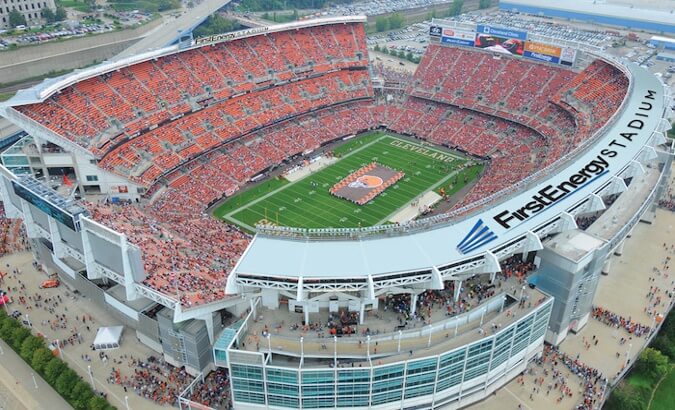
THE NFL FRANCHISE WILL BE THE FIRST IN THE COUNTRY TO DIVERT FOOD WASTE TO AN ANAEROBIC DIGESTION FACILITY, TURNING THE SCRAPS INTO ENERGY AND FERTILIZER.
This Sunday, the Cleveland Browns and FirstEnergy Stadium will showcase a new system that aims to recycle stadium food waste into renewable energy and fertilizer sources. The effort is expected to annually divert 35 tons of food waste from landfills to facilities producing sustainable, natural resources for Cleveland residents.
“Creative solutions to food waste provide communities with renewable energy opportunities and environmental benefits through reduced greenhouse gas emissions,” said Secretary Vilsack. “We must better educate folks about the problem of food waste and utilize partnerships like the one in Cleveland to begin to address the issue of food waste nationwide.”
THE PROGRAM IS
|
| Divert 35 tons of food waste from landfills every season
Reduce CO2 emissions by 28,000 pounds per year Generate enough electricity to power a single-family home for a year and a half Produce enough natural gas to heat 32 homes for an entire month Recover enough nutrients for 3 football fields of new crops |
This initiative is part of the U.S. Food Waste Challenge, a joint USDA, and EPA effort, calling on others across the food chain—including producer groups, processors, manufacturers, retailers, communities, and other government agencies − to join the effort to reduce, recover, and recycle food waste.
The Browns are the first professional franchise to implement this kind of system in their home stadium. Using the Grind2Energy™ system from InSinkErator, food scraps are collected and ground into a slurry, which is transported to an anaerobic digester operated by Quasar Energy Group at The Ohio State University’s Ohio Agricultural Research and Development Center (OARDC).
At the anaerobic digester, which periodically adds dairy cow manure to lower acidity and boost the methane, quasar produces biogas for energy and fuel uses in addition to vital nutrients and fertilizer that can be reused for farming.
“Digester systems are something this country’s dairy farms have used for years,” said Tom Gallagher, CEO of the Innovation Center for U.S. Dairy. “But we have just begun to tap what is possible. Through new partnerships – whether it’s with a stadium, or a hospital or a chain of supermarkets – dairy farms in all 50 states are able to house this type of system and turn food waste into food value for local communities. This proposition is just one of the goals that the Innovation Center for U.S. Dairy is setting for the immediate future.”
“Cities and local communities really identify with their professional teams, so when we see franchises make these partnerships and these commitments, we think there’s a potential multiplier effect for every fan that’s going to walk through those turnstiles,” said Allen Hershkowitz, Ph.D., the director of the Sports Greening Project at the Natural Resources Defense Council (NRDC). “We think there’s just an incredible amount of potential for sports teams and venues across the country to really act as leaders when it comes to changing the national conversation around food waste.”
